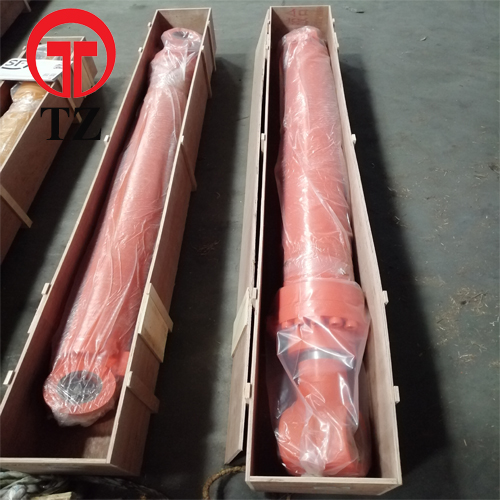At the heart of an excavator’s digging capabilities lies the hydraulic cylinder that actuates the bucket. This excavator hydraulic bucket cylinder assembly system generates the forces and motion to penetrate and scoop material, enabling an excavator to efficiently perform its earthmoving purpose. The extreme stresses and harsh conditions seen by bucket cylinders demand robust design and durable components for reliable service life.
We’ll take a close look at how bucket cylinders work, key parts and attributes, maintenance best practices. And what excavator owners should look for when needing to replace these essential bucket actuating assemblies.

Bucket Cylinder Function And Operation
The bucket cylinder uses fluid power to provide the force needed to drive the bucket’s movement. It consists of a hydraulic piston sealed within a cylindrical barrel, with hydraulic oil delivered to each side of the piston through control valves. Extending the piston rod forces the bucket to dig into the ground or dump its contents. Retracting the rod closes the bucket to capture and lift material. The large diameter barrels required generate immense digging forces from 1000 psi hydraulic pressure while the strokes lengths allow considerable bucket movement range.
Key Design Elements
To withstand the punishing combination of forces, abrasion, impacts, and temperatures, key elements of bucket cylinder design include:
- Robust sealing systems using wear rings and rod wipers to prevent leakage
- Hard chromed cylinder rods to resist abrasive wear and corrosion
- Tough nitrided steel cylinder barrels with excellent surface hardness
- Reinforced mounting eyes and heavy pivot pins
- Generously sized hydraulic ports and fluid channels
- Anti-rotation FEATUREs to avoid twisting forces
Good cylinder seals also help retain oil and keep out contaminants that rapidly accelerate wear. Overall, the materials and design enable sustained pounding use in rugged conditions over thousands of operating hours.
Maintenance Best Practices
Proper maintenance is crucial to gain maximum cylinder and excavator uptime. This includes:
- Inspecting cylinders regularly for damage, leaks, and loose fittings
- Lubricating all grease points per the manufacturer’s schedule
- Checking hydraulic oil for contamination
- Replacing damaged cylinder seals promptly
- Using strainers and filters to eliminate particles and debris
- Performing cylinder drift checks and realigning as needed
With proper care, bucket cylinders can operate reliably for multiple years before needing rebuild or replacement.
Replacement Considerations
When the time comes to replace an excavator’s bucket cylinder, key considerations include:
- Matching original bore size and stroke dimensions
- Verifying compatible mounting configurations
- Maintaining original cylinder force and speed specs
- Sourcing from reputable manufacturers using quality materials
- Reviewing any upgrades available for seals, wipers, or rod coatings
An expert cylinder supplier can help select the optimal replacement including custom cylinders tailored to an excavator’s requirements if needed. Properly specifying the replacement cylinder will restore fast cycle times and strong bucket force.
